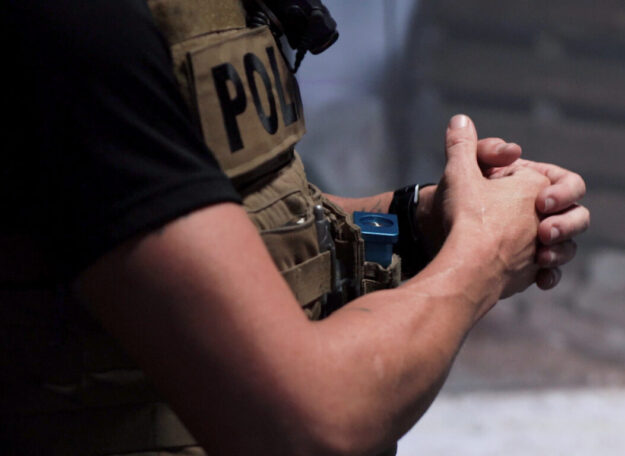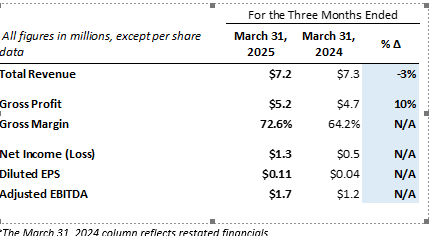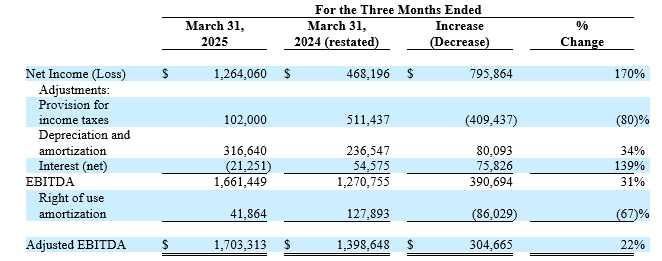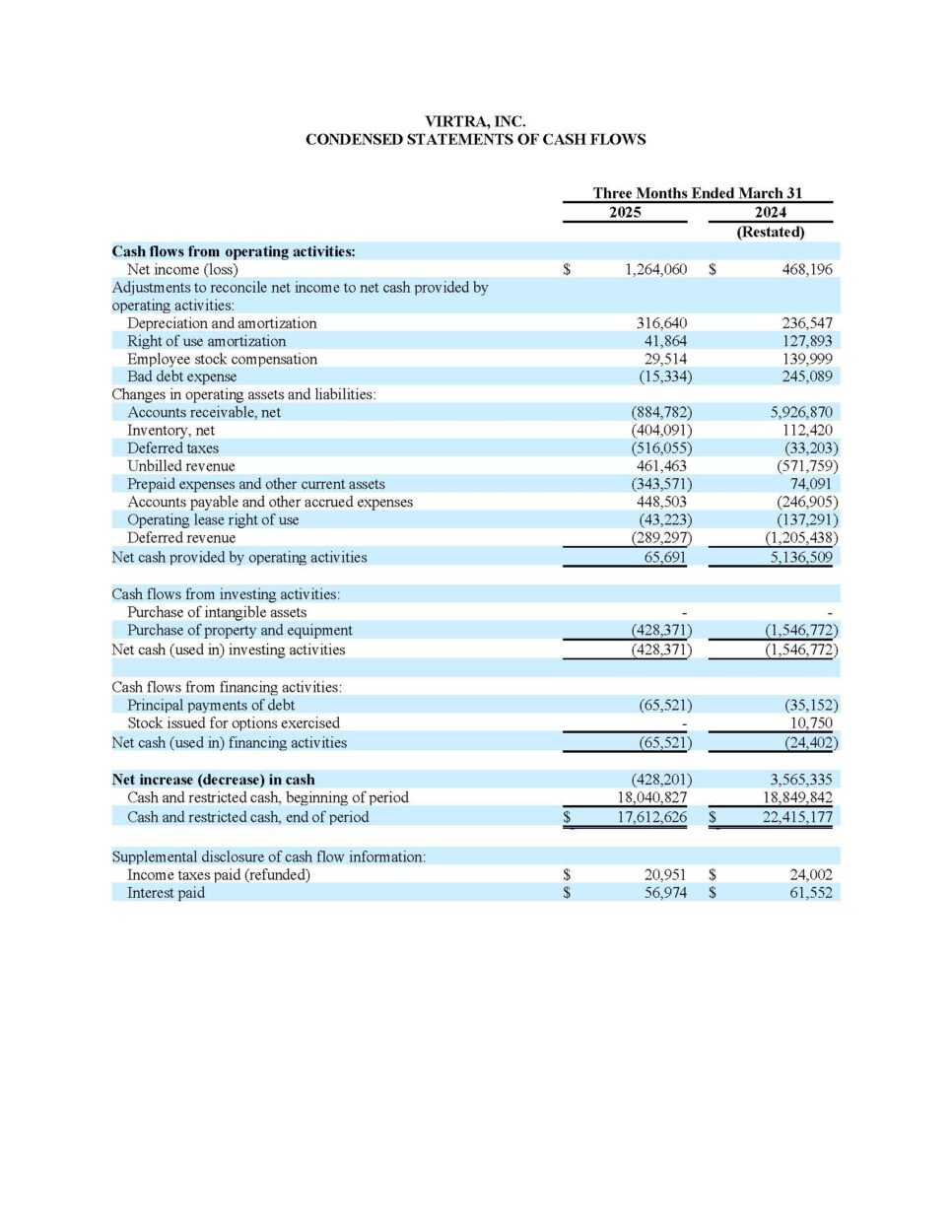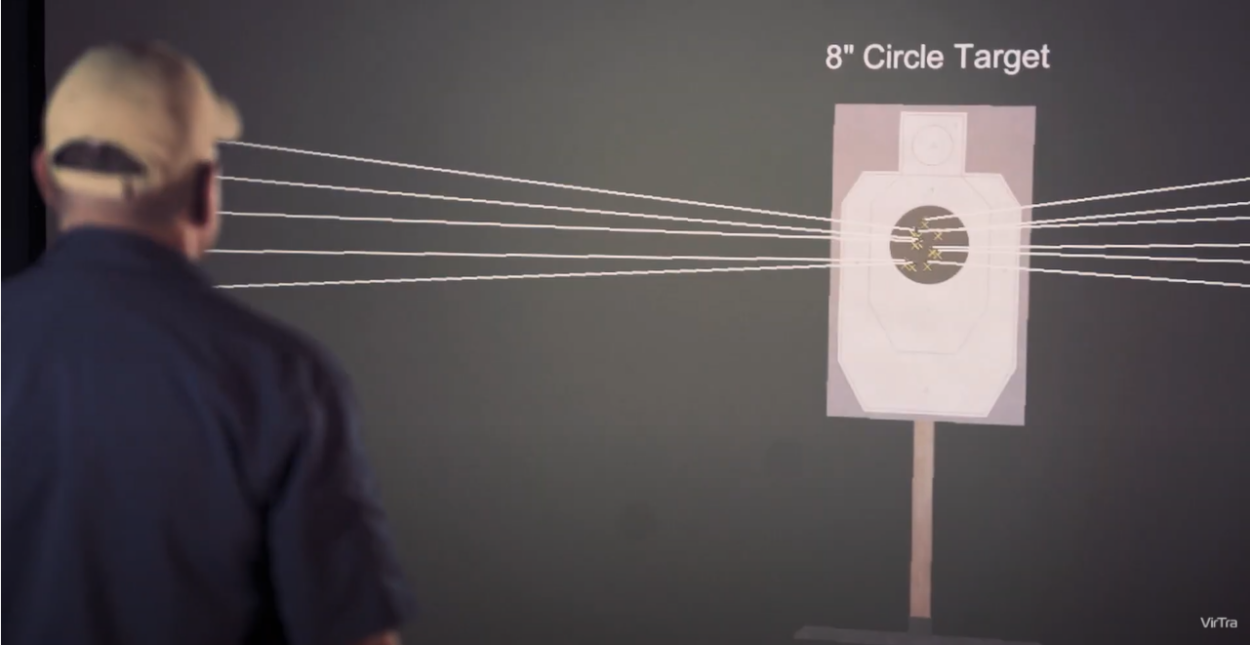
Law enforcement agencies must adopt effective use of force policies to ensure both public safety and officer accountability.
The Importance of Clear Use of Force Policies
Clear use of force policies are essential for law enforcement agencies to maintain public trust and ensure that officers adhere to established standards. These policies provide a framework that guides officers in making critical decisions during high-pressure situations. By having well-defined protocols, agencies can mitigate the risk of excessive force and align their actions with legal and ethical standards.
Furthermore, transparent policies help in maintaining accountability. When officers understand the boundaries and expectations set forth by their department, it becomes easier to enforce compliance and address any deviations effectively. This clarity not only protects the public but also safeguards officers from potential legal repercussions and public scrutiny.
Training and Simulation: Preparing Officers for Real-World Scenarios
Effective training programs are vital in preparing officers for the complexities of real-world scenarios. Utilizing advanced simulation technologies, such as those provided by VirTra, law enforcement agencies can create realistic environments where officers can practice their decision-making skills. These simulations allow officers to experience a wide range of situations, from routine encounters to high-stress confrontations in a controlled setting.
By engaging in immersive training, officers can better understand the nuances of use of force and develop the necessary skills to de-escalate potentially volatile situations. This hands-on approach ensures that officers are not only knowledgeable about policies but also adept at applying them in the field.
Balancing Public Safety and Officer Safety
A key challenge in law enforcement is balancing the need for public safety with the imperative to protect officers. Effective use of force policies must address this balance by providing guidelines that prioritize de-escalation and minimal force whenever possible while ensuring that officers are equipped to protect themselves and others.
Adopting a balanced approach fosters a safer community and enhances the overall effectiveness of law enforcement operations. It encourages a culture of restraint and respect for human life, which is crucial for maintaining public trust and supporting the well-being of officers.
Legal and Ethical Considerations in Use of Force
The use of force in law enforcement is governed by a complex web of legal and ethical considerations. Policies must align with federal, state, and local laws to ensure that officers’ actions are legally defensible. Additionally, ethical standards play a vital role in guiding officers’ behavior, emphasizing the importance of integrity, fairness, and respect for human rights.
Law enforcement agencies must provide continuous education on these legal and ethical frameworks. This ongoing training helps officers stay current with evolving standards and reinforces the importance of upholding the law and ethical principles in every interaction.
Continuous Review and Improvement of Policies
The dynamic nature of law enforcement necessitates the continuous review and improvement of use of force policies. Agencies must regularly assess the effectiveness of their policies through data analysis, feedback from officers, and community input. This iterative process ensures that policies remain relevant and effective in addressing current challenges.
By fostering a culture of continuous improvement, law enforcement agencies can adapt to new developments, incorporate best practices, and enhance their overall effectiveness. This commitment to excellence not only improves operational outcomes but also strengthens public trust and officer morale.
For information on how VirTra can help increase officer safety, contact us.
In the complex and high-stakes world of law enforcement, the ability to wisely use discretion can mean the difference between a peaceful resolution and unnecessary escalation.
The Importance of Discretion in Law Enforcement
Discretion is a fundamental aspect of law enforcement, allowing officers to make judgement calls based on the situation at hand. This ability to be flexible and responsive is crucial in maintaining order and ensuring public safety. It involves assessing the context and dynamics of an encounter to decide the most appropriate course of action.
Without the use of discretion, law enforcement would be forced to apply rigid protocols to every situation, which could lead to unnecessary confrontations or missed opportunities for de-escalation. Effective discretion helps in building trust within the community, as it demonstrates that officers are capable of making fair, human-centered decisions.
Factors Influencing the Decision to Escalate
Several factors can influence an officer’s decision to escalate an encounter. These include the behavior and demeanor of the individual involved, the presence of weapons, the environment, and the potential threat to public safety. Officers must quickly assess these elements to determine whether escalation is warranted.
Another critical factor is the legal framework and departmental policies that guide officers on when and how to escalate. These guidelines ensure that actions are legally justified and in line with ethical standards. Additionally, the officer’s experience, training, and intuition play a significant role in making these split-second decisions.
Training and Guidelines for Effective Discretion
Proper training and clear guidelines are essential for officers to exercise effective discretion. Training programs, such as those offered by VirTra’s V-VICTA®, provide officers with realistic scenarios that enhance their decision-making skills. These programs emphasize the importance of situational awareness, communication skills, and conflict resolution techniques.
Guidelines and standard operating procedures (SOPs) are also critical. They provide a framework within which officers can operate, ensuring consistency and accountability in their actions. These SOPs often include protocols for use of force, de-escalation techniques, and criteria for escalation, helping officers to make informed decisions in the field.
Case Studies: Real-World Examples of Discretion
Real-world case studies provide valuable insights into the application of discretion in law enforcement. For instance, an officer responding to a domestic dispute might choose to de-escalate the situation by separating the parties and mediating a dialogue rather than immediately resorting to arrests. This approach not only resolves the immediate conflict but also fosters trust within the community.
Another example could be an officer encountering a person experiencing a mental health crisis. Instead of escalating through force, the officer might use de-escalation techniques learned in training to calm the individual and connect them with appropriate mental health services. These cases highlight how discretion can lead to more humane and effective policing.
Balancing Safety and Community Trust
Balancing the need for safety with the goal of maintaining community trust is a complex challenge for law enforcement. Effective use of discretion plays a pivotal role in achieving this balance. By making thoughtful, measured decisions, officers can protect public safety while also demonstrating respect and empathy for the individuals involved.
Building community trust requires transparency and accountability in how discretion is exercised. Law enforcement agencies must ensure that their officers are well-trained, supported, and guided by clear policies. Engaging with the community and fostering open communication also helps in understanding community concerns and building a foundation of mutual respect and trust.
To learn more about how VirTra can help your agency, contact us to speak to a product specialist.
In today’s rapidly evolving world, the need for adaptive, inclusive, and effective training for law enforcement has never been greater. Agencies across the nation are navigating a unique challenge: developing training programs that resonate with officers from multiple generations—Baby Boomers, Generation X, Millennials, and Gen Z. Each group brings distinct values, learning preferences, and technological familiarity to the table, making one-size-fits-all training strategies obsolete.
VirTra is a provider of intense, immersive, and realistic simulation solutions for police, security and military personnel. Contact us today to learn more.
Understanding Generational Differences
Baby Boomers (born 1946–1964) tend to value structure, hierarchy, and in-person communication. Many are nearing retirement, yet they often hold leadership roles and possess a wealth of experience. Generation X (1965–1980), known for independence and skepticism, appreciates efficiency and pragmatic learning. Millennials (1981–1996), raised during the digital revolution, are collaborative and tech-savvy, while Gen Z (1997–2012) are digital natives who value inclusivity, rapid feedback, and multimedia learning environments.
Recognizing these generational characteristics is the first step in building a comprehensive training framework that leverages each group’s strengths and addresses their needs.
Multimodal Training for Law Enforcement Approaches
To engage all generations effectively, law enforcement training should be multimodal. For example, traditional classroom lectures and hands-on simulations appeal to Boomers and Gen X officers, who often value face-to-face learning. Meanwhile, Millennials and Zoomers may benefit more from interactive e-learning platforms, mobile training apps, and gamified content.
Scenario-based training using virtual reality (VR) is one promising avenue. VR simulations offer immersive, realistic environments where officers can hone de-escalation techniques, practice procedural justice, or engage in active shooter scenarios. These simulations appeal especially to younger officers, but with proper orientation, even seasoned Boomers can find them valuable.
Looking for engaging, fast-paced training simulations? VirTra simulators provide realistic, immersive and interactive training. Reach out today to schedule a demo.
Cross-Generational Mentorship
Another powerful training strategy is cross-generational mentorship. Pairing experienced Boomers or Gen X officers with younger recruits creates a mutually beneficial exchange: seasoned officers pass down institutional knowledge, while younger ones share new technologies and contemporary perspectives on policing. This collaboration helps build trust across age groups and fosters a culture of continuous learning.
Soft Skills and Cultural Competency
Modern policing demands more than tactical proficiency. Emotional intelligence, communication skills, and cultural competency are crucial, especially in diverse communities. Younger generations often value this training highly, aligning with calls for reform and community-oriented policing. Tailoring this content to reflect real-world scenarios ensures that even the most experienced officers find it relevant and applicable.
Don’t miss: Choosing the Right Law Enforcement Training Simulator – A Comparison Guide
Ongoing and Adaptive Learning
Training should not end at the academy. Continuous professional development, accessible across digital platforms and traditional methods, ensures that all officers—regardless of age—stay current with legal updates, technological tools, and evolving public expectations. Encouraging a growth mindset across all ranks reinforces the importance of adaptability in today’s policing landscape.
VirTra Simulation Training for Law Enforcement Engages all Ages
Training law enforcement personnel across generational lines is a challenge—but also an opportunity. By embracing diversity in learning styles and life experience, departments can cultivate a more cohesive, competent, and forward-thinking force. VirTra Simulations provides engaging and interactive training that speaks to each generation, and lays the foundation for well-trained, well-prepared officers. To learn more about VirTra, contact us today.
Have you noticed that many articles about officer involved shootings (OIS) paint the officer in a negative light? An article by Calibre Press discussed an incident and how it accurately depicts media’s interpretation of OIS events.
In Phoenix in December 2023, officers attempted to apprehend a man waving a metal pipe walking in and out of traffic. 911 was called by a woman who claimed her boyfriend was stabbed by this same person. The man began to approach a strip mall with the pipe, and repeated attempts to get him to stop – including less lethal rounds – failed. The man ended up shot and died from his injuries.
Don’t miss: A North Carolina Correctional Facility’s Innovative Use of Simulator Training
Local media covered the story, but their coverage failed to take note of the threatening motions made towards officers. This interpretation of the facts painted a narrative that the officer is the real “bad guy” here. The media did not take all sides of officer involved shootings into account. They often fail to report on the officer’s side of the story.
VirTra is a global provider of judgmental use of force training simulators and firearms training simulators. The company’s patented technologies, software, and scenarios provide intense training for de-escalation, judgmental use-of-force, marksmanship, and related training that mimics real-world situations. VirTra’s mission is to save and improve lives worldwide through practical and highly effective virtual reality and simulator technology. Learn more about the company at www.VirTra.com.
In the evolving landscape of military preparedness, VirTra’s V-Marksmanship® emerges as a leading solution. This software that is part of all VirTra simulators is a comprehensive platform that enhances marksmanship training through immersive, customizable, and ballistically accurate simulations.
Customizable Training Environments
V-Marksmanship® offers unparalleled flexibility in creating diverse training scenarios. Instructors can tailor environments by adjusting:
- Weather Conditions: Simulate various climates, from rain and fog to different wind conditions, to prepare soldiers for any operational environment.
- Time of Day: Train under varying light conditions, including dawn, dusk, or nighttime to enhance adaptability.
- Target Configuration: Deploy an unlimited number of targets, including paper, steel, moving, and non-moving types, positioned at varying distances and orientations.
This level of customization ensures that each training session can be uniquely tailored to meet specific operational requirements and training objectives. Users will be prepared for numerous possibilities.
Train with your own Weapon
To bridge the gap between simulation and live-fire exercises, VirTra provides drop-in laser recoil kits compatible with various firearms. These kits allow trainees to use their actual duty weapons within the simulation, providing authentic recoil and weapon handling experiences. The integration of these kits ensures that the skills developed during simulation are directly transferable to real-world scenarios.
To deliver authentic recoil feedback, the recoil kits rely on CO₂-powered magazines. These magazines are designed to mimic end-of-magazine scenarios and allow instructors to introduce malfunctions that trainees must diagnose and resolve. They are also weighted to closely match the feel of a real magazine.
Thorough Debrief and Performance Analysis
As with scenarios, marksmanship performance can be thoroughly reviewed at any time. Every trainee’s shot placement is easily identified, showing who fired which shot and when.
Debrief is further facilitated through the Trainee Monitoring and Recording (TMaR) system. This hardware and software combo enables instructors to review trainees’ actions, including reaction times and decision-making processes, by recording and replaying simulation sessions. These sessions can be viewed immediately or saved for later.
For more information on how V-Marksmanship® can elevate your unit’s training capabilities, talk to a product specialist about setting up a demonstration.
Net Income Rises to $1.3 Million
Bookings Up 120% Year Over Year to $6.4 Million
CHANDLER, Ariz. — May 12, 2025 — VirTra, Inc. (Nasdaq: VTSI) (“VirTra” or the “Company”), a global provider of judgmental use of force training simulators and firearms training simulators for the law enforcement and military markets, reported results for the first quarter ended March 31, 2025. The financial statements are available on VirTra’s website and here.
First Quarter 2025 and Recent Operational Highlights:
- First quarter bookings totaled $6.4 million, a strong increase from $2.9 million in Q1 2024 and contributing to $33.4 million in bookings over the last twelve months, reflecting continued traction despite persistent federal funding uncertainty, including delayed disbursements and continuing resolutions.
- Backlog totaled $21.2 million as of March 31, 2025, including $9.9 million in Capital, $5.8 million in Service, and $5.5 million in STEP contracts.
- V-XR® product momentum increased, with two units sold to date and growing interest reflected in active quotes and customer engagement.
- Reentered the GSA procurement program with bundled offerings to streamline purchases and reduce sales cycle friction across federal and municipal buyers.
- Advanced development work under the U.S. Army’s IVAS program, including expanded recoil kit validation and reliability testing in preparation for a potential production phase.
- Maintained robust working capital at $35.3 million, positioning the Company for sustained growth and operational agility.
First Quarter 2025 Financial Highlights:
*The March 31, 2024 column reflects restated financials.
Management Commentary
VirTra CEO John Givens stated, “We started 2025 with improved operational execution and a solid backlog foundation, though bookings moderated quarter-over-quarter due to delays in federal budget disbursements, standard seasonality, and a more cautious demand environment across the law enforcement and defense sectors. These dynamics have reinforced the importance of programs like STEP, which provide affordable, recurring access to immersive training systems even when procurement cycles slow down. Our development efforts related to the U.S. Army’s IVAS program also advanced during the quarter, including expanded recoil kit validation and reliability testing, which are key steps as we prepare for a potential transition into the production phase. Alongside this, demand for our V-XR platform continues to build, with the first delivery expected in Q2 and additional units already in process.
“With more focused sales and marketing functions, we’re engaging priority agencies more directly and improving conversion across channels. As part of this effort, we reentered the General Services Administration (GSA) procurement program in Q1 with standardized product bundles, enabling eligible agencies to purchase directly from a federal catalog and reducing friction in the purchasing process. VirTra is positioned to convert opportunity into growth in the quarters ahead. Our focus remains on disciplined execution and aligning closely with the evolving training needs of our customers.”
First Quarter 2025 Financial Results
Note: Q1 2024 financials presented below reflect a restatement made in Q4 2024 to adjust the timing of revenue recognition associated with a 2021 international sale.
Total revenue for the first quarter was $7.2 million, compared to $7.3 million in the prior year period. The 3% decrease was primarily driven by delayed deliveries on several customer orders booked in Q4 2024, which pushed revenue recognition into future quarters.
Gross profit for the first quarter improved to $5.2 million (73% of total revenue), compared to $4.7 million (64% of total revenue) in the prior year period. The increase in gross margin reflects a 25% decrease in cost of sales, highlighting the Company’s operational efficiency gains and more favorable product mix.
Net operating expense for the first quarter was $3.8 million, a 6% decrease from $4.1 million in the prior year period. This decrease reflects ongoing cost discipline and optimization of internal resources while maintaining core growth initiatives.
Operating income for the first quarter more than doubled to $1.4 million, compared to $0.7 million in the prior year period.
Net income for the first quarter increased to $1.3 million, or $0.11 per diluted share (based on 11.3 million weighted average diluted shares outstanding), up from a restated $0.5 million, or $0.04 per diluted share (based on 11.0 million weighted average diluted shares outstanding), in the first quarter of 2024.
Adjusted EBITDA, a non-GAAP metric, increased 22% to $1.7 million, up from $1.4 million in the first quarter of 2024.
Cash and cash equivalents were $17.6 million at March 31, 2025, compared to $18.0 million at December 31, 2024. Working capital grew to $35.3 million, and the Company maintained a debt-light balance sheet, positioning it well for near- and long-term execution.
Financial Commentary
CFO Alanna Boudreau stated, “Our Q1 results reflect a steady shift in the right direction, with strong gross margins, disciplined cost management, and increased clarity on backlog conversion into future revenue. This greater visibility is supported by improved forecasting around STEP and capital orders, stronger contract structures, and more predictable customer delivery timelines. One key recent development was the enhancement of our STEP agreements, which now include full three-year commitments, converting what was previously uncertain renewal potential into reliable, recurring revenue, with renewal rates expected to continue around 95%.
“The steps we’ve taken over the past several quarters to improve execution and efficiency continue to gain traction and support our bottom-line results. With $17.6 million in cash and over $35 million in working capital, we remain well-positioned to pursue growth while navigating the timing uncertainties of government funding cycles. As new sales channels activate and V-XR adoption builds, we believe the Company is positioned for sustained top-line improvements throughout 2025.”
Conference Call
VirTra’s management will hold a conference call today (May 12, 2025) at 4:30 p.m. Eastern time (1:30 p.m. Pacific time) to discuss these results. VirTra’s Chief Executive Officer John Givens and Chief Financial Officer Alanna Boudreau will host the call, followed by a question-and-answer period.
U.S. dial-in number: 1-877-407-9208
International number: 1-201-493-6784
Conference ID: 13753538
Please call the conference telephone number 5-10 minutes prior to the start time. An operator will register your name and organization. If you have any difficulty connecting with the conference call, please contact Gateway Investor Relations at 949-574-3860.
The conference call will be broadcast live and available for replay here and via the investor relations section of the Company’s website.
A replay of the call will be available after 7:30 p.m. Eastern time on the same day through May 26, 2025.
Toll-free replay number: 1-844-512-2921
International replay number: 1-412-317-6671
Replay ID: 13753538
About VirTra, Inc.
VirTra (Nasdaq: VTSI) is a global provider of judgmental use of force training simulators, firearms training simulators for the law enforcement, military, educational and commercial markets. The company’s patented technologies, software, and scenarios provide intense training for de-escalation, judgmental use-of-force, marksmanship, and related training that mimics real-world situations. VirTra’s mission is to save and improve lives worldwide through practical and highly effective virtual reality and simulator technology. Learn more about the company at www.VirTra.com.
About the Presentation of Adjusted EBITDA
Adjusted earnings before interest, income taxes, depreciation, and amortization and before other non-operating costs and income (“Adjusted EBITDA”) is a non-GAAP financial measure. Adjusted EBITDA also includes non-cash stock option expense and other than temporary impairment loss on investments. Other companies may calculate Adjusted EBITDA differently. VirTra calculates its Adjusted EBITDA to eliminate the impact of certain items it does not consider to be indicative of its performance and its ongoing operations. Adjusted EBITDA is presented herein because management believes the presentation of Adjusted EBITDA provides useful information to VirTra’s investors regarding VirTra’s financial condition and results of operations and because Adjusted EBITDA is frequently used by securities analysts, investors, and other interested parties in the evaluation of companies in VirTra’s industry, several of which present a form of Adjusted EBITDA when reporting their results. Adjusted EBITDA has limitations as an analytical tool and should not be considered in isolation or as a substitute for analysis of VirTra’s results as reported under accounting principles generally accepted in the United States of America (“GAAP”). Adjusted EBITDA should not be considered as an alternative for net income, cash flows from operating activities and other consolidated income or cash flows statement data prepared in accordance with GAAP or as a measure of profitability or liquidity. A reconciliation of net income to Adjusted EBITDA is provided in the following tables:
Forward-Looking Statements
The information in this discussion contains forward-looking statements and information within the meaning of Section 27A of the Securities Act of 1933, as amended, and Section 21E of the Securities Exchange Act of 1934, as amended, which are subject to the “safe harbor” created by those sections. The words “anticipates,” “believes,” “estimates,” “expects,” “intends,” “may,” “plans,” “projects,” “will,” “should,” “could,” “predicts,” “potential,” “continue,” “would” and similar expressions are intended to identify forward-looking statements, although not all forward-looking statements contain these identifying words. We may not actually achieve the plans, intentions or expectations disclosed in our forward-looking statements and you should not place undue reliance on our forward-looking statements. Actual results or events could differ materially from the plans, intentions and expectations disclosed in the forward-looking statements that we make. The forward-looking statements are applicable only as of the date on which they are made, and we do not assume any obligation to update any forward-looking statements. All forward-looking statements in this document are made based on our current expectations, forecasts, estimates and assumptions, and involve risks, uncertainties and other factors that could cause results or events to differ materially from those expressed in the forward-looking statements. In evaluating these statements, you should specifically consider various factors, uncertainties and risks that could affect our future results or operations. These factors, uncertainties and risks may cause our actual results to differ materially from any forward-looking statement set forth in the reports we file with or furnish to the Securities and Exchange Commission (the “SEC”). You should carefully consider these risks and uncertainties described and other information contained in the reports we file with or furnish to the SEC before making any investment decision with respect to our securities. All forward-looking statements attributable to us or persons acting on our behalf are expressly qualified in their entirety by this cautionary statement.
Investor Relations Contact:
Matt Glover and Alec Wilson
Gateway Group, Inc.
[email protected]
949-574-3860
– Financial Tables to Follow –
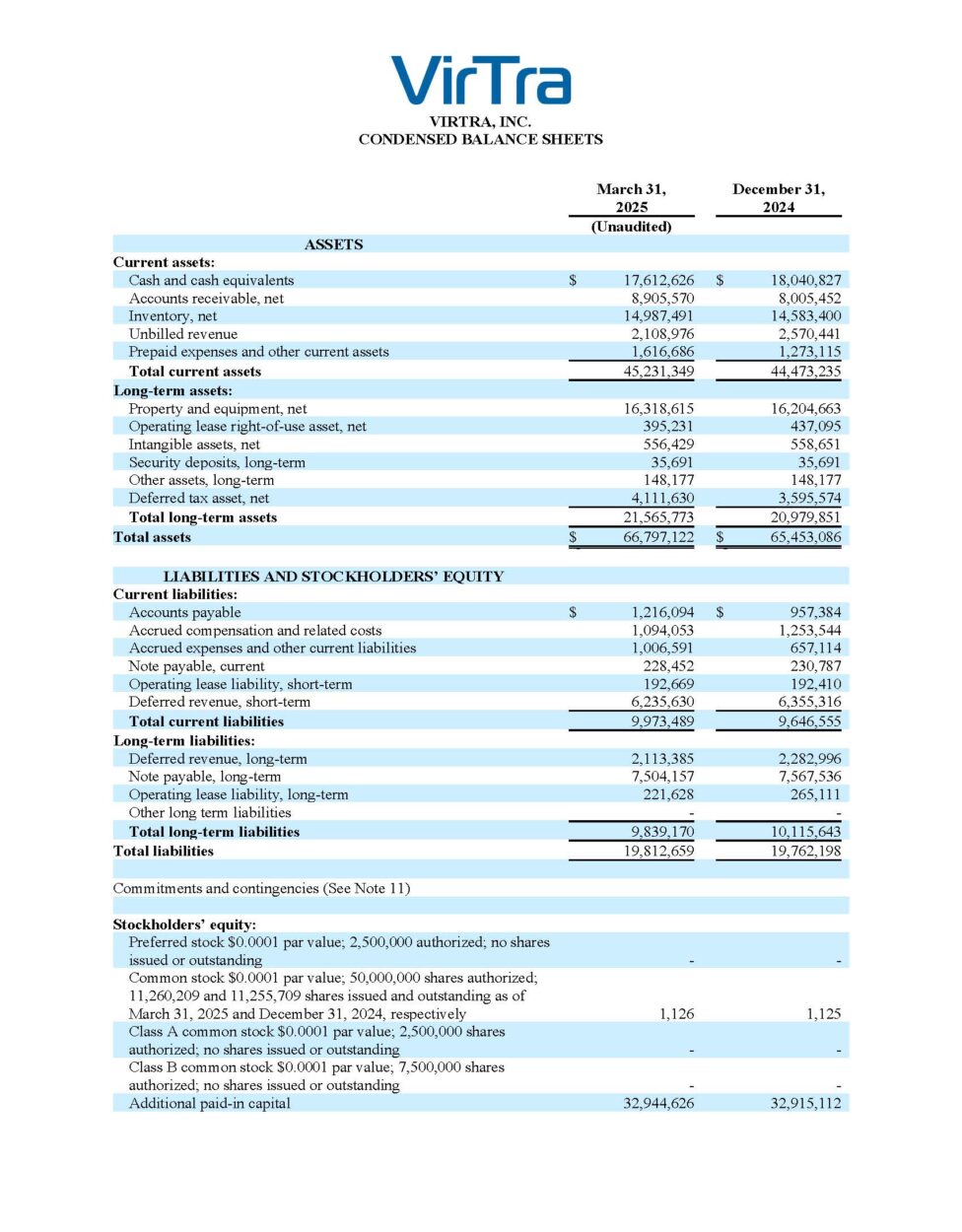

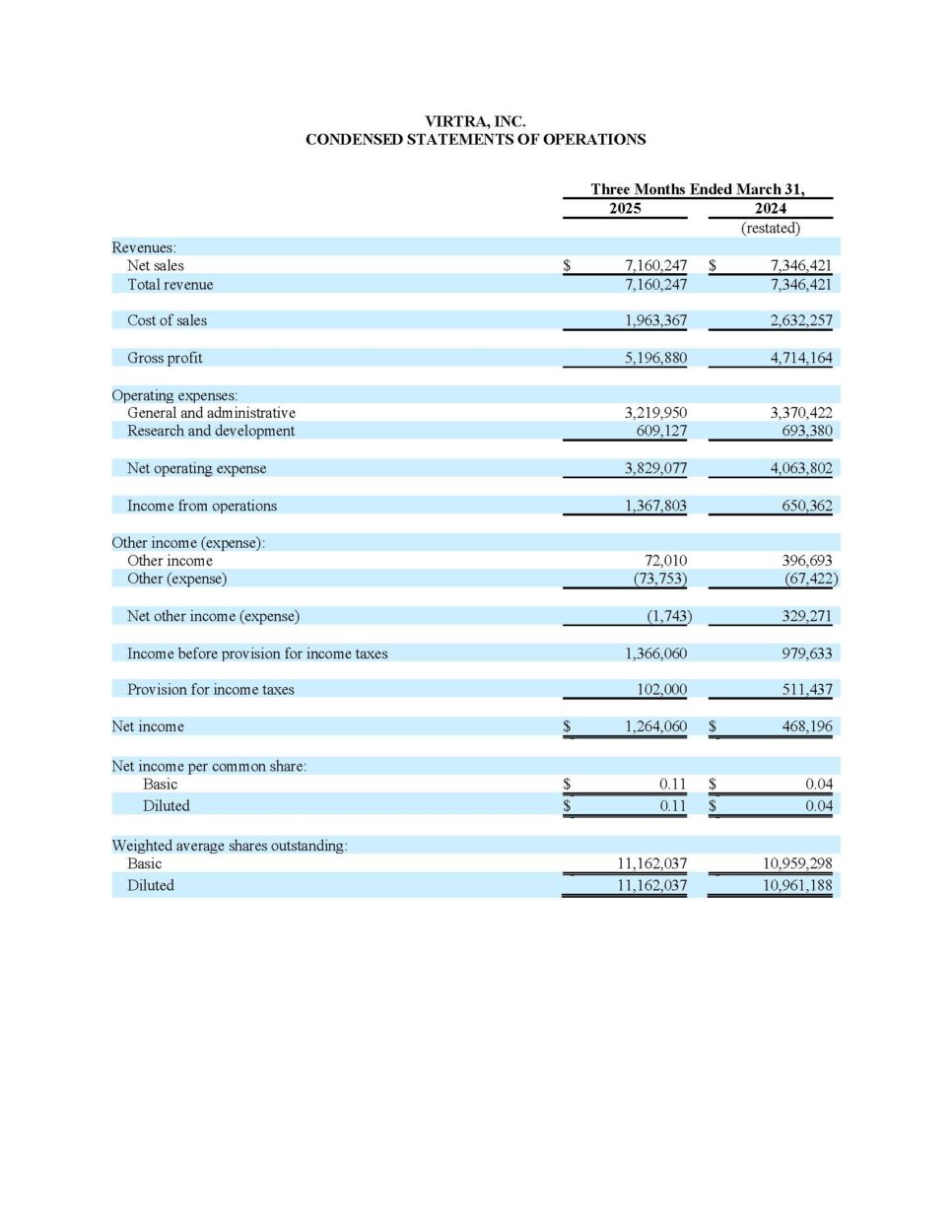
Need to check temperature? Use a thermometer. Need to measure human performance as it applied to police practice? Use VirTra.
VirTra’s value as a training tool is a given. Military and law enforcement agencies worldwide rely on our simulators for consistent, high-quality training. But in the past year, our team has been thrilled to see an exciting new use case:
Research!
Increasingly, scientists looking to measure use-of-force performance under stress turn to VirTra.
VirTra Certified as a Research Tool
Last year, Ohio University tested the V-100 Single Screen Simulator to determine if it could meet the demands of Department of Defense-funded research. The study tracked 30 adults, including those with police or military experience, over three shooting sessions. Researchers evaluated the participants on 21 different shooting metrics, using the simulator’s real-time analytics to capture the data.
The result? Ohio State University found that the simulator accurately captured all 21 variables with a high-reliability score. These findings confirmed that the system’s simulated ballistics met the requirements and exceeded expectations. Ohio State concluded that the simulator was well-suited to demanding research applications. Read the full study here.
The V-100’s newfound academic credentials made it a logical choice for further use of force research. Lon Bartel, Grand Canyon University Doctoral student, with the support of Force Science decided to use it to shed light on a longstanding question about police use of force:
How long does it take an person to stop shooting when presented with new information?
To explore this, the team created a scenario within the V-100 that displayed a target. When the target turned green, participants had to shoot as fast and accurately as possible but stop immediately when it turned red. The system then measured how many shots were fired after the stop signal, tracking reaction time delays.
This research led to some surprising findings. On average, the 109 participants fired an additional two rounds after the target turned red, with the first unintended shot occurring 0.16 seconds after the signal changed. In the most ideal of conditions, the majority of participants fired 2 or more rounds after the stop signal. Where previous research conducted in this area looked at police officer performance, this study used participants and Cumberland University. Illuminating that officers and civilians alike take time to stop shooting once started. Read the full study here.
Conclusion
The results of these studies reinforce VirTra’s reliability in high-stakes research. By providing accurate, real-time performance metrics, the V-100 has proven to be a critical tool for both training and scientific inquiry. As researchers continue to investigate decision-making, reaction times, and use-of-force dynamics, VirTra’s role in shaping the future of tactical training and law enforcement policy will only grow.
Although advanced, the V-100 is within reach of most police departments. Agencies of all sizes can leverage this trusted training tool using grants. Download the VirTra grant guide for easy-to-follow steps on how to apply for simulator grants.
When it comes to simulation training, hearing someone talk about it is nowhere near as impactful as experiencing it. This is why VirTra invites you to the upcoming conferences, trade shows, and events we are attending – giving you a chance to see it for yourself.
Whether it is a demonstration in the 5-screen V-300® simulator or with the newly launched V-XR® headset, we want you to put our technology to the test and see how it can fit into your existing training regimen.
Here are the events VirTra will be attending over the next few months:
- Oklahoma Chiefs of Police Conference – Durant, OK – May 19-23, 2025
- Delaware Chiefs Conference – Dewey Beach, DE – May 20-25, 2025
- IADLEST Conference – Charlotte, NC – June 1-4, 2025
- International Association of Healthcare Security & Safety Conference – Scottsdale, AZ – June 2-4, 2025
- Tribal Emergency Management Conference – Temecula, CA – June 10-11, 2025
- Texas School Safety Conference – San Antonio, TX – June 22-25, 2025
- Police & Security Expo – Atlantic City, NJ – June 24-26, 2025
Additionally, there is a demo opportunity at Dover Police Department in Delaware where we invite law enforcement to try out the V-300. Departments that attend will also receive exclusive access to an online webinar: “How to Safely Interact with Individuals with Autism.”
To book some time with a product specialist at one of these upcoming events, click here.
The demand for law enforcement continues to grow, and agencies across the country are turning to innovative technologies to improve officer preparedness and public safety. One of the most impactful innovations reshaping the training landscape is virtual reality (VR) simulation training. This redefines how officers learn, practice, and respond in the real world.
The Shift Towards Virtual Reality in Training
Traditional training methods, while valuable, often fall short in replicating the stress, unpredictability, and variety of real-life encounters officers face daily. That’s where VR simulation steps in. Departments such as the Boston University Police Department and the Johnson County Sheriff’s Office have already integrated VR programs into their training curriculum. These programs offer immersive, repeatable, and data-driven scenarios that allow officers to build confidence in a controlled environment.
According to the Wall Street Journal, many companies are now realizing the practical workplace applications of virtual reality, and law enforcement is no exception. With VR, departments can reduce risk, improve consistency, and better prepare officers without the logistical challenges of real-world exercises.
Benefits of VR-Based Law Enforcement Training
- Realistic Scenario Simulation: Officers experience lifelike situations that mirror what they may encounter on duty, from active shooter situations to high-stress traffic stops.
- Safety and Risk Reduction: Trainees can make critical decisions in real-time without physical danger, making it a safe way to learn from mistakes and refine tactics.
- Cost-Effective Long-Term: Although the initial investment may be higher, VR reduces recurring costs such as ammunition, travel, and facility use associated with traditional training.
- Mental Health and De-Escalation Training: Advanced VR systems now include scenarios that train officers on how to identify and respond to individuals experiencing autism, anxiety, schizophrenia, and other mental health challenges.
Case Studies and Real-World Applications
In a recent YouTube feature, the Johnson County Sheriff’s Office demonstrated how they use VR to simulate high-pressure environments. Similarly, the Denver Police Department showcased their use of VR to train new recruits with an emphasis on real-world readiness and de-escalation tactics.
This growing adoption signals that VR is more than a trend – it’s becoming a standard for progressive law enforcement agencies nationwide.
VirTra’s Role in Shaping the Future of Police Training
At VirTra, we’re proud to be at the forefront of this transformation. Our VR-based platforms, including the V-XR® headset and the V-300® immersive simulator, provide agencies with the tools they need to build safer communities. Our training modules are developed in collaboration with subject matter experts and include everything from judgmental use-of-force scenarios to evidence-based mental health response training.
With over 250 agencies using our systems worldwide, we’re committed to ensuring that officers are not only prepared for the moment – but for the future of policing.
Conclusion
Virtual reality is revolutionizing how law enforcement officers train. It enables scalable, effective, and safe preparation for the increasingly complex situations they face. As more agencies adopt this technology, VR will continue to play a critical role in shaping responsible, confident, and community-focused policing.
If your department is ready to experience the next generation of law enforcement training, contact us to schedule a demo today.
There is no question that pistol red dot sights are here to stay. What started as a military technology can now be found on a growing number of officer weapons. Driven by performance advantages seen in competition shooting and declining costs, red dot adoption shows no sign of slowing down. So, what are the benefits of this option, and how does it impact your agency’s training?
For the uninitiated, red dot sights (RDS) are a type of electronic optic sight for firearms. They have long been used on rifles, carbines, and competition handguns and are steadily seeing adoption on duty handguns. They date back to the 1970s but have been widely available since 2006. There are many RDS models, but for law enforcement, it usually comes down to a few options due to authorized equipment lists.
Aimpoint ACRO P-2
• Pro: Good FOV
• Pro: Enclosed emitter
Holosun EPS
• Pro: Enclosed Emitter, less cleaning needed
Leupold Delta Point Pro (DPP)
• Pro: Motion Sensor Technology (MST™) extends battery life.
Sig Romeo Zero
• Pro: Inexpensive
Trijicon RMR
• Pro: Versatile MOA options
They all consist of a metal frame, emitter, and a reflective surface. Usually, they will differ in dot brightness/color, battery life, and durability. There are arguments as to the “best” option – every law enforcement agency will have to take its own needs into consideration when purchasing and issuing RDSs.
Why use an RDS? Most shooters agree they deliver faster target acquisition, but they have become especially significant for law enforcement due to the enhanced threat focus they offer. Since officers do not need to shift visual focus between the target, front and rear iron sights while using an RDS, they can pay closer attention to the subject. This potentially improves the safety of both the officer and the subject and increases situational awareness. RDSs have other benefits, as well as some drawbacks.
Another significant advantage of the RDS is accuracy. Sure, plenty of shooters will attest that they can outperform RDS users with their iron sights, but by and large, RDSs have been proven to reduce marksmanship qualification time and cost. In one study, iron-sighted shooters only made “critical hits” 28% of the time, while red-dot sighted shooters did so 70% of the time.
Officers with diminished eyesight (aging) also benefit from using red dot sights. Since a red dot overlays the reticle over the target, it reduces the burden of shifting focus from sights to subject and allows them to be more confident they’ll hit what they are aiming at. In total, these factors contribute to an overall improved response time, which translates to safer officers and safer communities.
RDS Drawbacks
“Well, if RDSs are so great, then why doesn’t everyone use them?”
Admittedly, red dots are not a cure-all. They’re still costly, even as prices have decreased over the past 5 years. It can be a hefty investment to order red dots for your entire team and ensure they fit in your holster. Be prepared to pay an even larger sum if your agency’s service weapons are not compatible with off-the-shelf red dot mounting options.
Additionally, red dots cannot make a poor shooter into an excellent one – only a firm grasp of proper shooting fundamentals can do that. Plus, they mainly require batteries to function, placing officers in a challenging situation if their optic is not powered.
A significant number of police departments have decided that RDS benefits outweigh the potential drawbacks, as the RDS market is expected to grow to $96.9M by 2032 (largely driven by LE adoption). For those who have come to the same conclusion, here is a quick start guide for installing and setting up your RDS.
Compatibility and Mounting
When transitioning to red dot sights, ensuring compatibility with your agency’s service weapons before purchase is paramount. Many of the most popular law enforcement firearms now offer models or modifications designed for RDS integration. Below are some key details regarding compatibility for commonly used handguns:
- Glock 17 and Glock 19: Red dot compatibility began with the introduction of the Glock MOS (Modular Optic System) platform in 2015.
- Sig Sauer P320: The P320 RX series, designed with RDS compatibility, launched in 2017, featuring a slide cut for direct optic mounting.
- Smith & Wesson M&P: The M&P M2.0 CORE (Competition Optics Ready Equipment) series debuted in 2016, providing built-in mounting options for various optics.
When mounting an RDS, ensure that the optic is securely affixed to the firearm. Use high-quality screws and mounting plates, preferably those recommended or provided by the manufacturer, to avoid loose fittings under recoil. Proper torque settings are critical, so investing in a torque wrench designed for firearm applications is advisable. Regular checks during maintenance can ensure your optic remains firmly mounted and operational.
Implementing Red Dot Training
Red dot sights offer significant advantages to law enforcement officers, from improved accuracy and threat focus to faster target acquisition. However, like any tool, their effectiveness depends on proper training and implementation. This is where VirTra’s simulators and V-VICTA (Virtual Interactive Coursework Training Academy) Red Dot Transition course shines.
As the only RDS training program POST-certified and developed in partnership with Victory First utilizing Aimpoint, VirTra provides officers with a structured way to transition to red dot technology and save time and money at the range. By integrating advanced simulation scenarios, agencies can ensure that officers not only master the mechanics of using an RDS but also gain situational awareness and decision-making skills.
Getting Started with Red Dot Sights: Drills
Now that your sight is mounted and secure, let’s start training. Below are two foundational drills from the VirTra RDOT program designed to help officers zero their RDS and build confidence with their new equipment. Begin by co-witnessing the red dot with iron sights, then proceed to the drills.
- Drill #1: Obtaining Zero
- Drill #2: Confirming Zero
Drills provide officers with a structured approach to learning and fine tuning the RDS within simulation. When combined with advanced training scenarios, skill drills and the accompanying certified V-VICTA curriculum, they can significantly enhance proficiency and confidence.
Whether your agency is considering red dot sights for the first time or looking to enhance its current training protocols, combining high-quality equipment with cutting-edge training like VirTra’s V-VICTA courses can lead to safer outcomes for both officers and the communities they serve.
For more information on safe simulation RDS training and to explore VirTra’s curriculum, click here.





